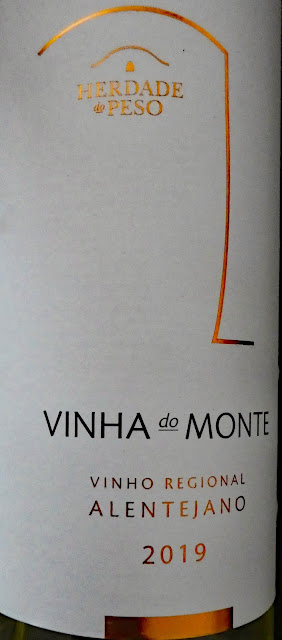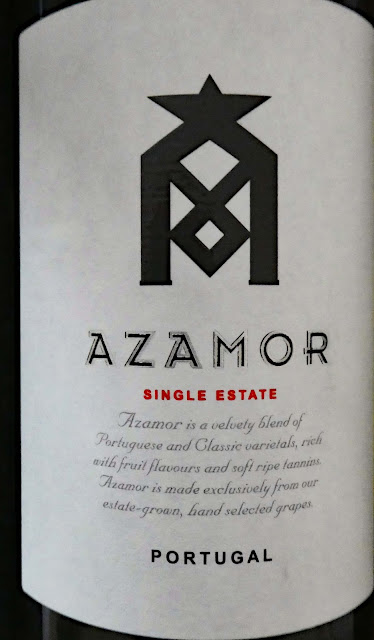Drinking through Portugal wine regions. The Alentejo
Part III
Foot Trodden (2021), a book on Portuguese wine that I am currently reading, covers these eight regions: Minho, Douro, Dao, Bairrada, Colares, Ribatejo, Alentejo and Madeira (home of one of the most age-worthy wines). Other regions noted are Algarve, Setubal, Beiras Interior, Tránsmontano, Bucelas, VR Lisbon and Carcavelos. This is the continuation of an occasional focus on Portugal and over the next month or two I’ll try to get my hands on as many of the wines of Portugal as I can. Any tips or help will be most welcome!
Of all the companies bringing Portuguese wine into Ireland, Liberty Wines (with very strong connections to the country) are best placed to summarise the recent history of wine there. They do that well in this paragraph from their current portfolio.
From 1932, when Antonio de Oliveira Salazar took power, until Portugal’s accession to the EU in 1986, wineries were largely state-controlled. This generally stunted the development of exports and quality-driven producers in the country. Once state bureaucracy was relaxed and Salazar was removed from power, the Portuguese quality wine revolution got underway. It has been a slow process, but the past decade has seen the movement gather pace. As a result, few countries can match the value and diversity that Portugal has to offer.
Herdade Do Peso Vinha Do Monte Vinho Regional Alentejano (IG) 2019, 12.5% ABV,
€16.95 RRP. Stockists: Mannings Emporium, The Wine Centre, Wineonline.ie
Sogrape is Portugal’s leading wine company, with an unparalleled presence. Since its creation in 1942, it has been investing in the main Portuguese wine regions. With a strong presence in Dão, Douro and Vinhos Verdes, entry into Alentejo - the national wine region with the highest growth rates - was natural and inevitable and came via Herdade Do Peso.
This Vinha Do Monte white is one of their wines and is produced from Antão Vaz, Arinto and Roupeiro grapes, supplied by growers in the Vidígueira region. It is one of the cooler Alentejo sub-regions and benefits from cool Atlantic air funnelled inland by a gap in the coastal mountains. Limestone soils here help to control vine vigour and lend elegance to the wines.
This white is fermented at low temperatures in stainless steel to retain freshness and vibrant fruit flavours. It is then aged on lees in tank to add extra depth and texture.
A medium-bodied wine, it has an attractive light gold colour. The aromatics are very fresh and elegant with fruity (pear, peach), floral and mineral notes combined. That vibrant fruity freshness is balanced by a lively acidity on the palate and the wine is refreshing as an aperitif and a match to seafood and fish dishes and with all kinds of appetisers. Quite a crisp finish, will have you smacking your lips!
Enjoy this Very Highly Recommended Wine.
Alentejo is not that well-known here and then there’s its little-known (in Ireland) use of talha (amphorae). The talha has been part of life here since Roman times. The wine is "shared copiously” with family and neighbours. It is never bottled, just bring your own container, and food too (enough to share!) if you wish to eat in the cellar. No money changes hands, so don’t mention it!
See also Part 11 of this mini-Portugal series. Better still, go and get the book, even for this Talha chapter alone.
***************
Check out our Top 2023 Wines here.
***************
Check out the Good Value Wine List here
***************
Azamor Single Estate Vinho Regional Alentejano 2019l, 14.5% ABV,
RRP €21.95 Morton’s, Searsons Wine Merchants, McHughs Off Licence - Kilbarrack Road, The 1601, Drink Store, World Wide Wines, Egans Off Licence, Wineonline.ie, Leopardstown Inn.
Portuguese red wines are most often blends and this one takes the biscuit with a mix of indigenous and French varieties listed as 20% Syrah, 18% Alicante Bouschet,17% Touriga Franca, 17% Merlot 12% Touriga Nacional, 10% Trincadeira and 6% Petit Verdot. Not too sure many would remember all those if you are out shopping for wine. But the French also have many multi-varietal wines so follow the region or better still the producer. Just ask for an Azamor red from Alentejano. This one, the Single Estate, with elegance, concentration and depth of flavour, is well worth the effort.
Deliciously fruity, and elegant with soft tannins, Azamor is made thanks to that melange of classic Portuguese and French grape varieties. It is mid-ruby robed and gorgeously fruity with soft tannins. The aromas, of rich dark red fruit scents, promise much and translate through to the well-rounded palate bursting at the seams with soft fruit flavours with the flimsiest wrap of spice. Soft yet vibrant flavours and soft tannins also accompany you to a magnificent finish.
A terrific player with aperitifs, but even better with light dishes of meat, fish and pasta. Very Highly Recommended.
Situated relatively far south, the Alentejo is known for its dry, hot summers, when the temperature can often rise to 45°C. However, lying at 350 metres above sea level, Azamor’s 27 hectares of vineyard benefit from the cooling influence of altitude. Situated on low vigour, clay and schist slopes, these are some of the most densely planted vineyards in the region and produce low yields of very concentrated fruit.
Portugal mini-series
Part IV (Vinho Verde, Lisboa and Alentejano).
Part 11 (Douro, Dão, Alentejo and Setubal.)


No comments:
Post a Comment